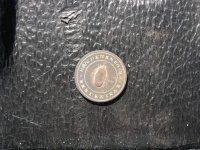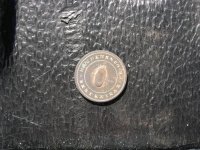I'd like a little help with this flat button. I've done a little research and the only thing I can find is that David Hayden, a button maker from Massachusetts joined with the original founders of Scovill Manufacturing Co. in 1808 (at that time known as Abel Porter & Co.). This button was found at a site that has given up relics that date to the 1950's. Could this button be that old? 
Thanks for any and all help.
Randy

Thanks for any and all help.
Randy













